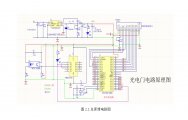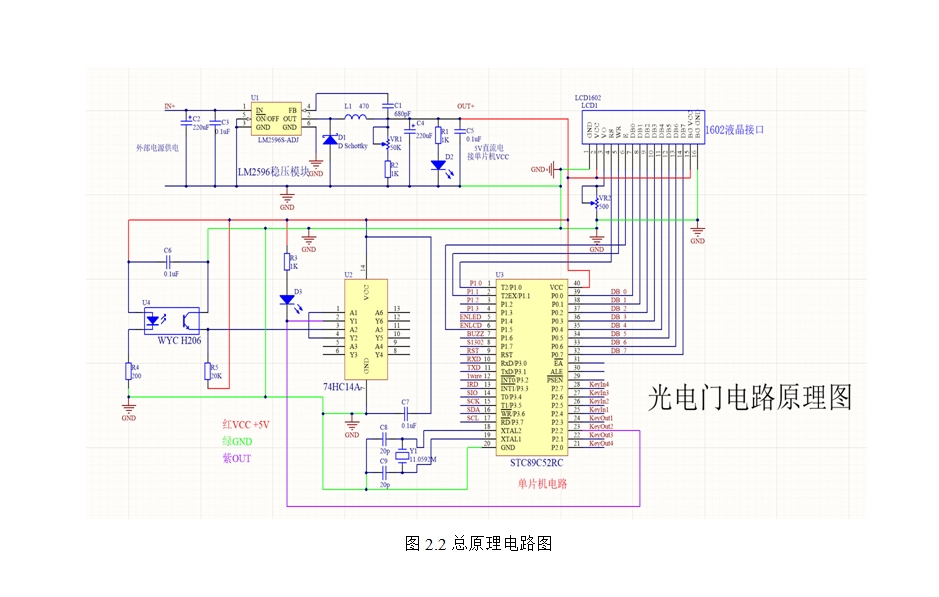利用光电传感器设计转速测量装置

利用光电传感器设计转速测量装置(任务书,开题报告,外文翻译,论文8000字)
摘 要
本文介绍了一种利用光电传感器设计的转速测量装置。确定了转速测量仪器的整体设计思路,设计了整个测速系统的硬件电路与软件程序,并进行了系统调试。核心控制部分采用STC89C52单片机,为确保实现该测速装置的自动化与智能化;利用LM2596稳压模块系统对单片机和光电传感器进行供电;SD-1/2光电传感器对信号进行采集与处理,Keil仿真软件编写程序并生成相应代码;stc烧录软件将程序烧录至单片机;配置液晶显示模组,设计单片机显示驱动程序,通过1602液晶屏显示出最后结果,最终使得该测速装置能够准确测量物体转速。该设计所能测量的时间精确度为0.01s,其最大的特点是非接触式测量,相比于传统的转速测量仪器具有实用性强、精确度高、稳定性好。
关键词:STC89C52单片机 光电传感器 转速测量
Design Rotational Speed Measurement Device With Photoelectric Sensor
Abstract
A speed measuring device using photoelectric sensors. is introduced in this paper. The design idea of the rotational speed measurement device is determined, the hardware circuit and software program of the whole rotational speed measurement system are designed, the system debugging has aslo carried out. The core control part adopts STC89C52 microcontroller to ensure the automation and intelligence of the speed measuring device. The microcomputer and the photoelectric sensor are powered by the LM2596 stabilized regulator voltage system; The SD-1/2 photoelectric sensor is used for signal collection and processings Keil simulation software writes programs and generates corresponding codes; STC burning software burns program to the microcontroller; Configures the liquid crystal display module, designs the microcontroller display driver program, displays the final result through the 1602 liquid crystal screen, and finally enables the speed measuring device to accurately measure the object speed. Finally, the device can accurately measure the rotational speed of the object. The time accuracy of this design is 0.01s and the biggest advantage of this design is non-contact measurement, which is more practical, accurate and stable than the traditional rotational speed measurement device. [版权所有:http://DOC163.com]
Key Words: STC89C52 microcontroller; Photoelectric sensor; Speed measurement
[来源:http://Doc163.com]



目 录
摘 要 II
Abstract III
第一章 绪论 1
1.1 光电传感器测速的发展现状 1
1.2 光电传感器测速的原理简述 2
1.3 单片机与光电传感器测速的应用 2
第二章 总体方案设计 4
[资料来源:Doc163.com]
2.1 转速测量原理 4
2.2 设计方案 4
第三章 硬件系统 6
3.1 稳压装置模块 6
3.2 光电传感器装置模块 6
3.3 单片机装置模块 7
3.4 液晶显示装置模块 9
第四章 软件程序设计 11
4.1 程序框图 11
4.2 系统程序 11
第五章 系统调试与结论 21
参考文献 22
致谢 24 [资料来源:http://Doc163.com]
